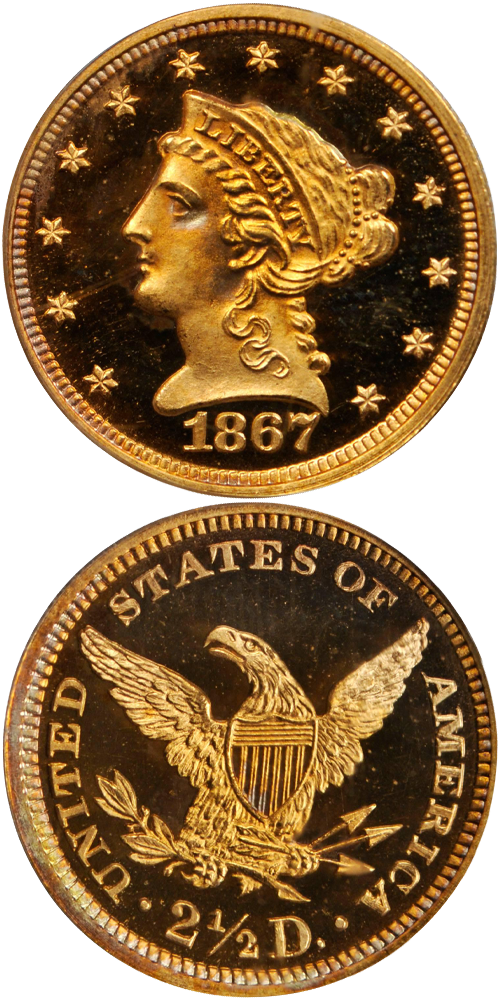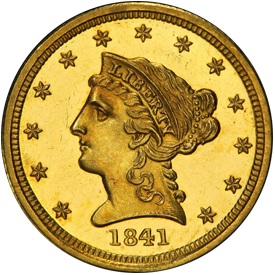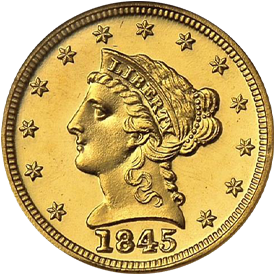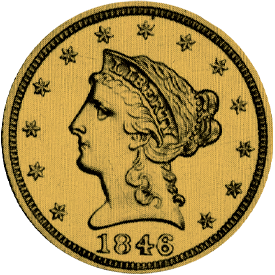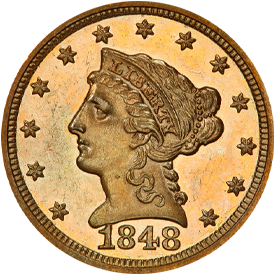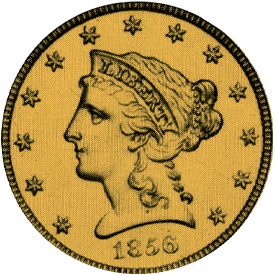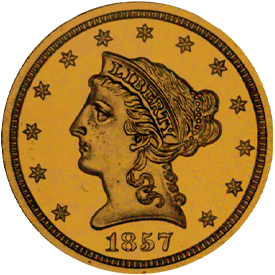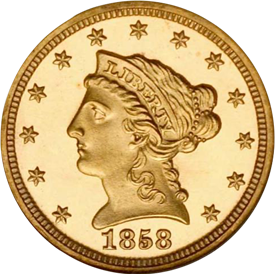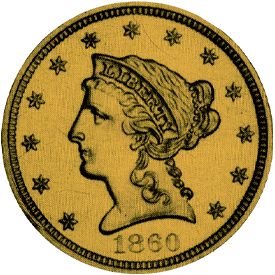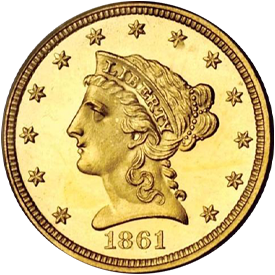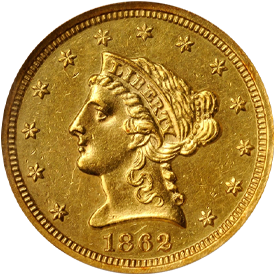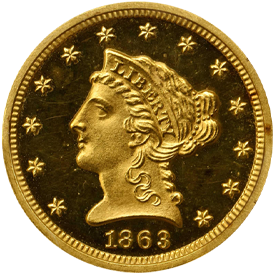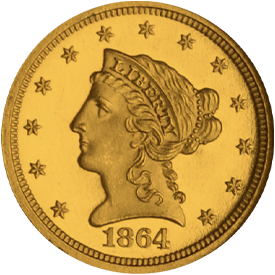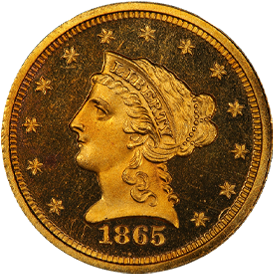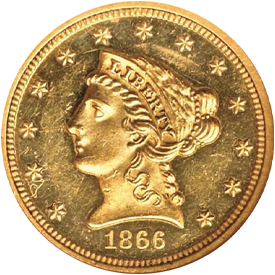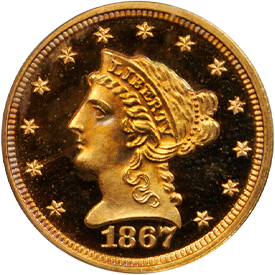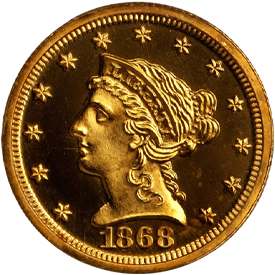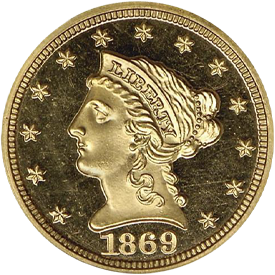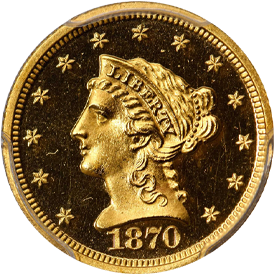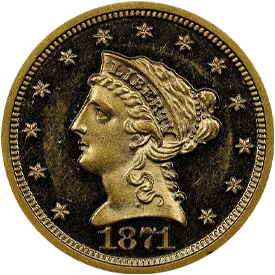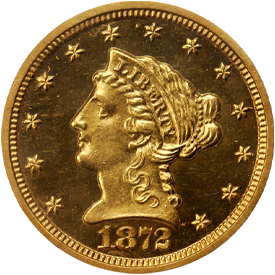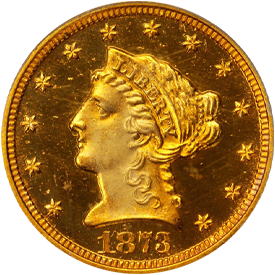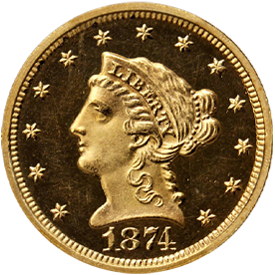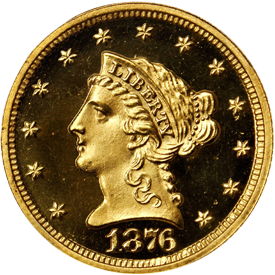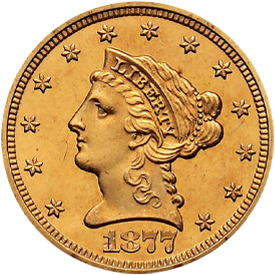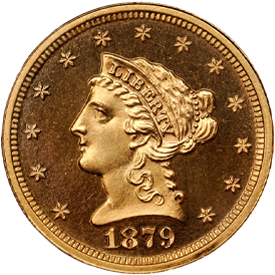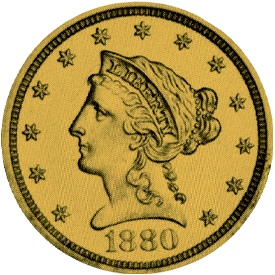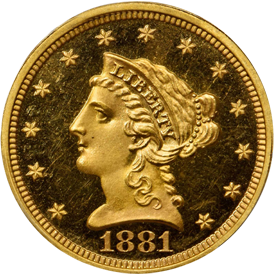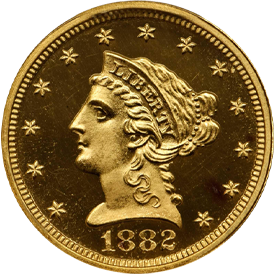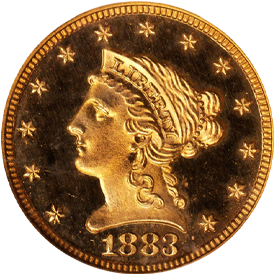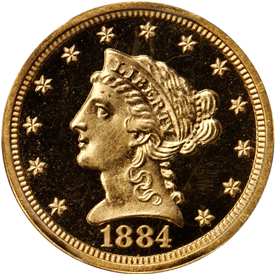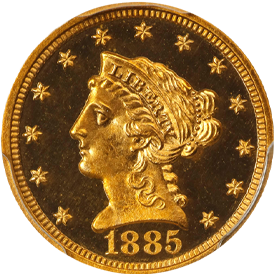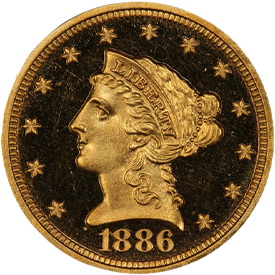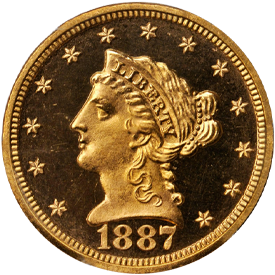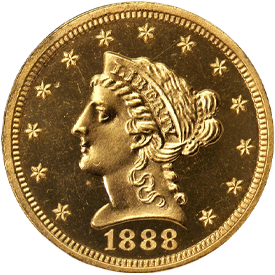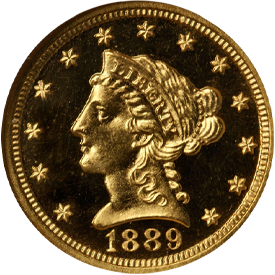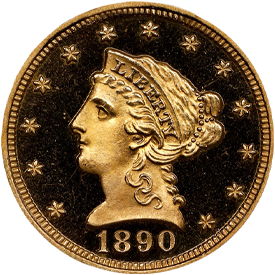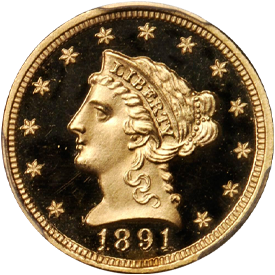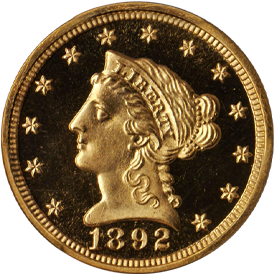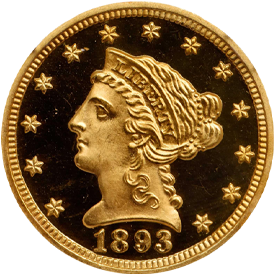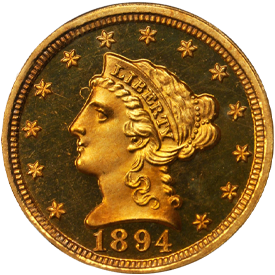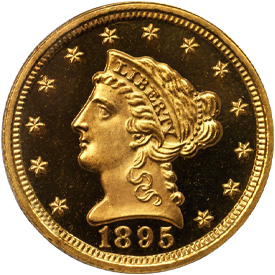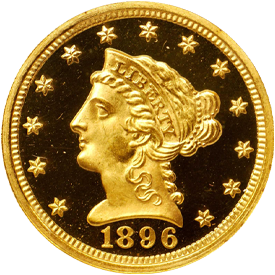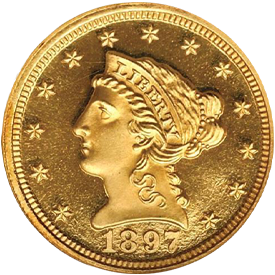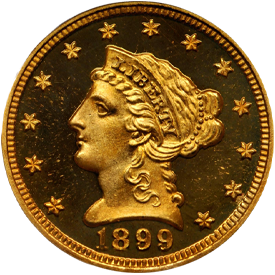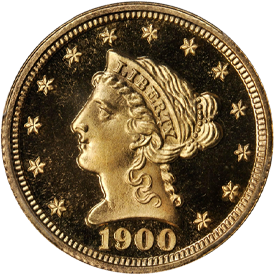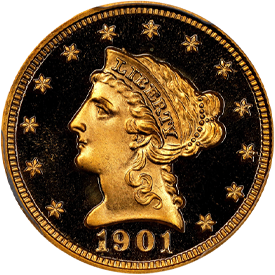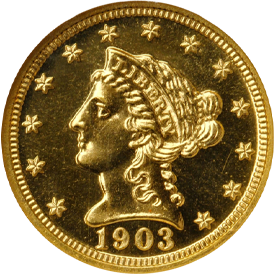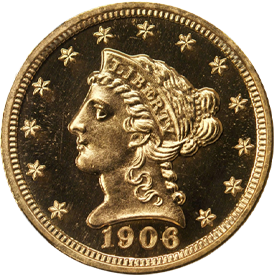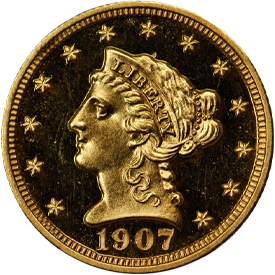Designed by: Christian Gobrecht
Issue Dates: 1840-1907
Composition: 90% gold, 10% copper
Diameter: 18 mm
Weight: 4.18 grams (64.50 grains)
Edge: Reeded
Proof Mintage: 4,232 (estimated)
While a tiny handful of Proof Liberty quarter eagles were struck prior to 1858, all are extraordinarily rare with fewer than five pieces known of most dates. The Mint kept no records of their early Proof coinage, and prior to 1858 when direct sales to collectors began, Proofs were made selectively, and distributed to either foreign dignitaries, government officials or collectors with connections to the Mint.
Up until about 1880, production was typically quite low, with most dates having an original mintage of anywhere from 20 to 35 pieces. Starting in 1880, mintages steadily climbed and by the 1890s, production was regularly topping 100 pieces annually. By 1900, the 200 mark had been reached, and most dates through the end of production in 1907 had mintages in the 150-200 coin range.
As stated above, the pre-1858 issues are all quite rare, and certified populations are all in the low single-digits. After that point, availability improves with most dates through the mid 1870s having survivor estimates in the 15-to-25-coin range. From the late 1870s through about 1890, roughly 35-50 are known of each date and 50 to around 70 are known of most dates in the early 1890s. After about 1896, the number extant rises sharply, and most dates through 1907 can boast of at least 100 to 125 survivors, occasionally more.
Cameos and Deep/Ultra Cameos are fairly plentiful, with that characteristic designated on about 40% of the graded coins by PCGS and nearly three quarters of NGC’s coins. After 1902 though, this attribute is less frequently seen, though towards the end of the period, it again is sometimes seen.
Liberty quarter eagles (along with gold dollars) are among the more affordable Proof gold coins. While no Proof gold can be called “inexpensive”, Choice PR-63 and 64 coins can be acquired in the mid to upper four-figure range and Gem PR-65 and 66s can be found in the very low five-figure range. Even Superb PR-67 coins won’t break the bank of collectors with some disposable income, usually selling in the $30K to $50K range – certainly not cheap, but affordable to some.
